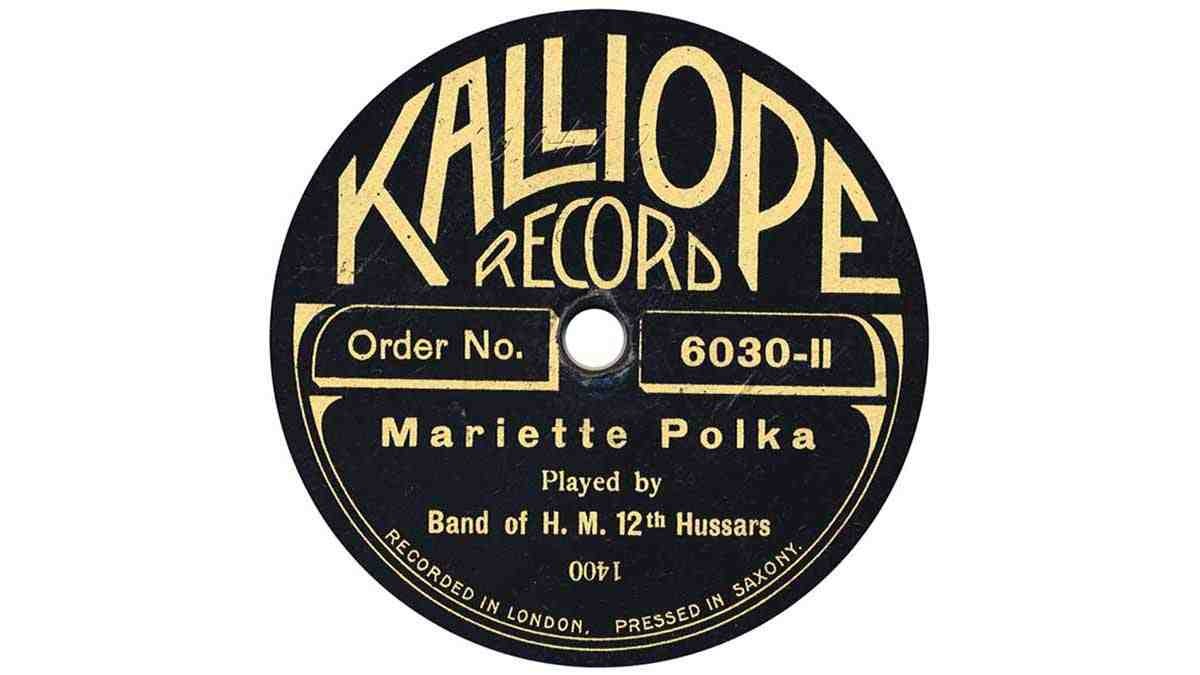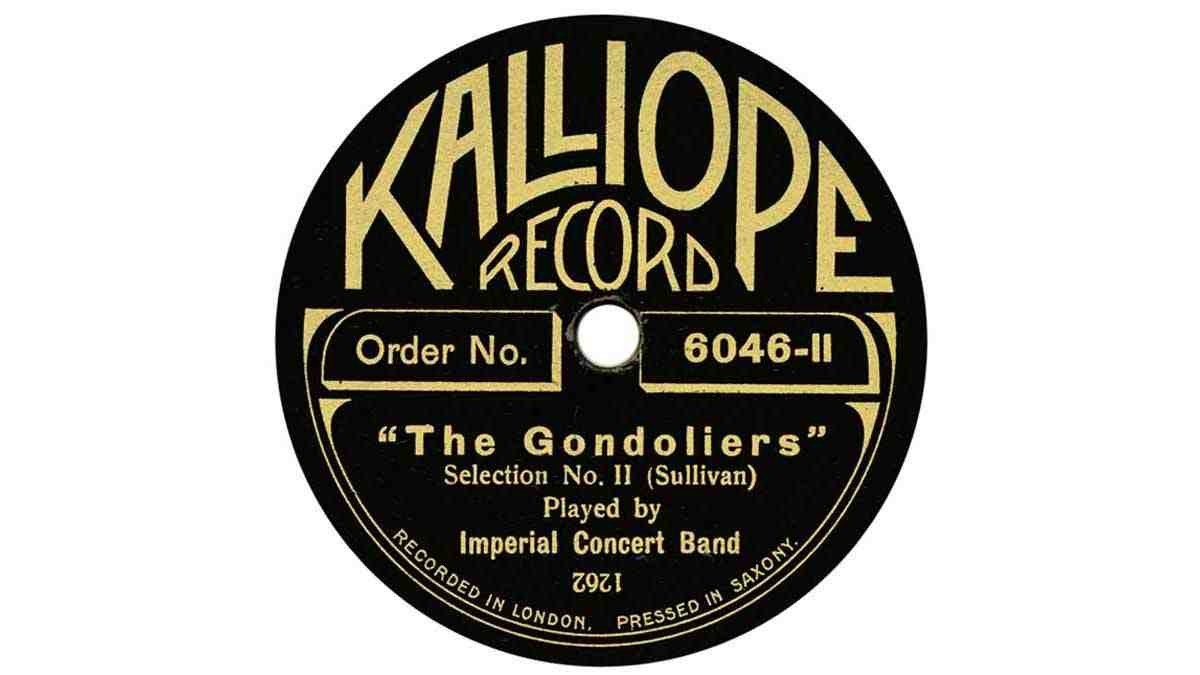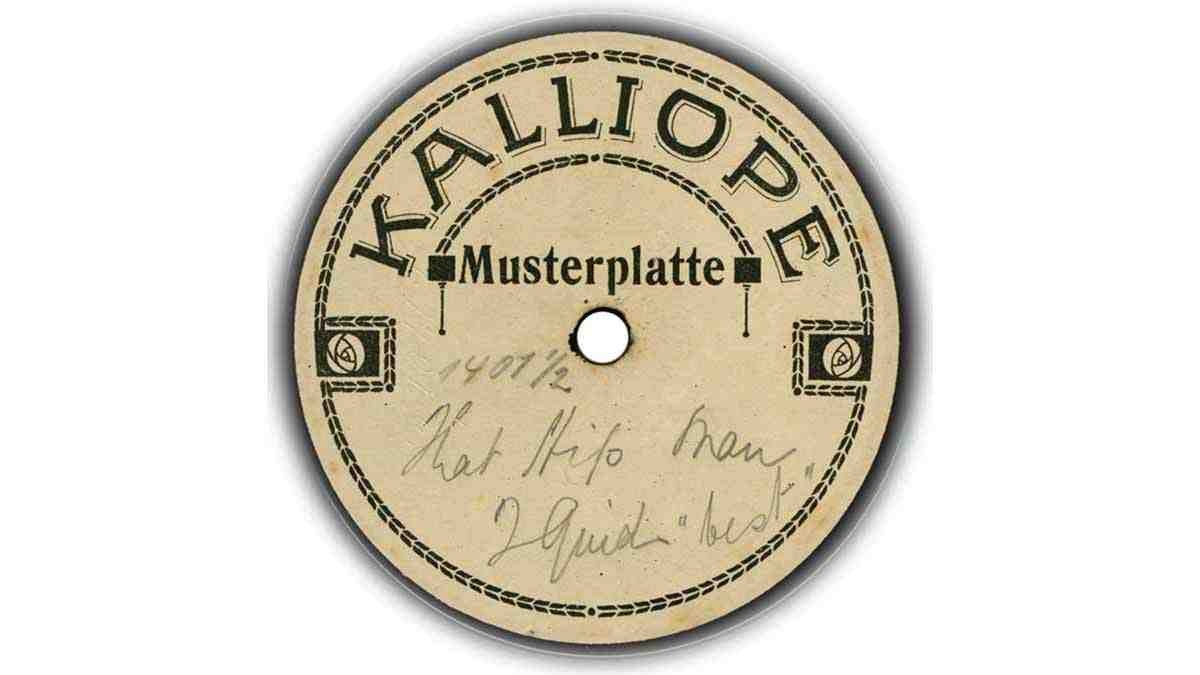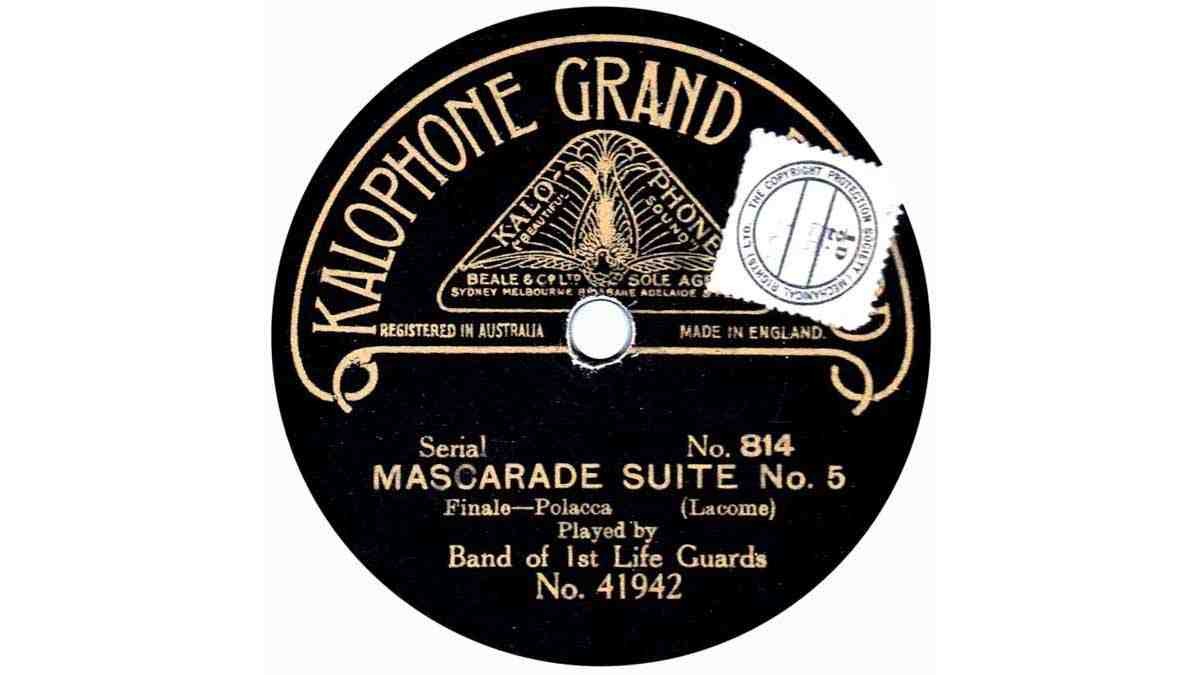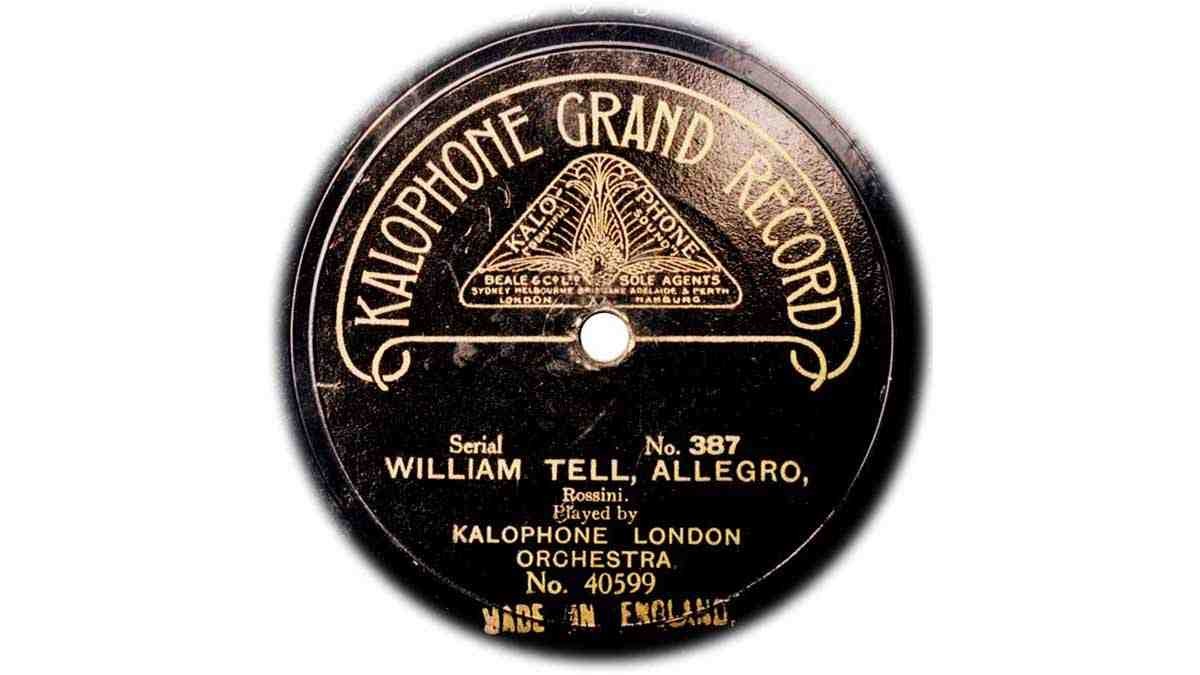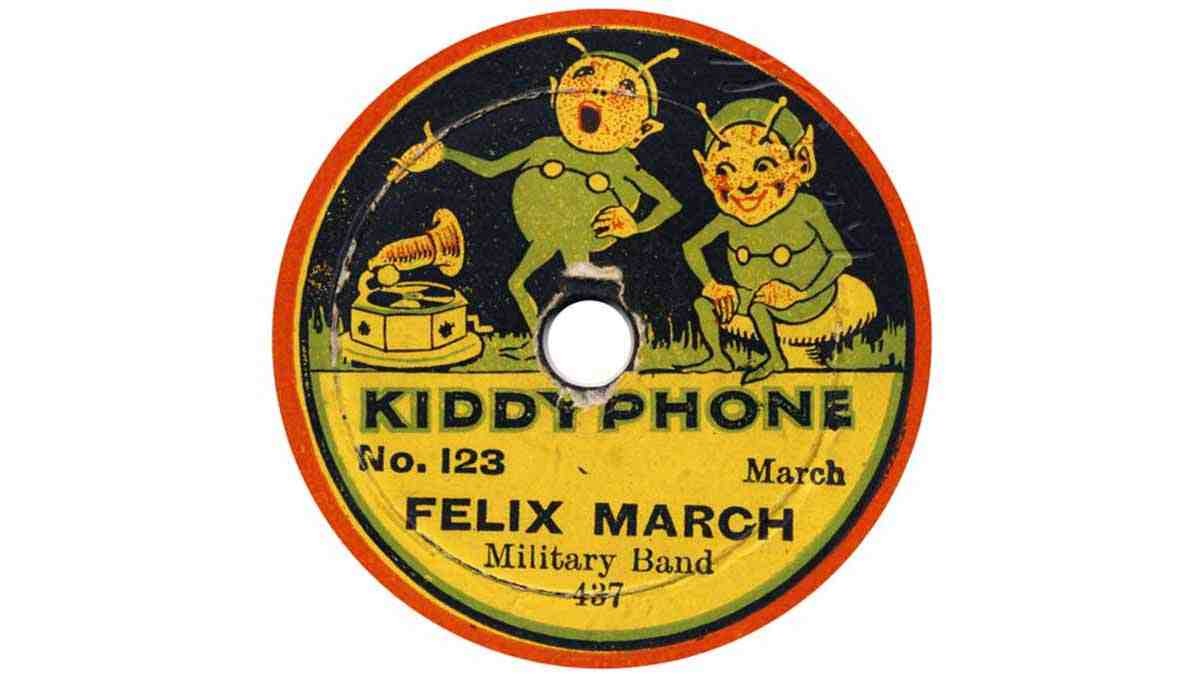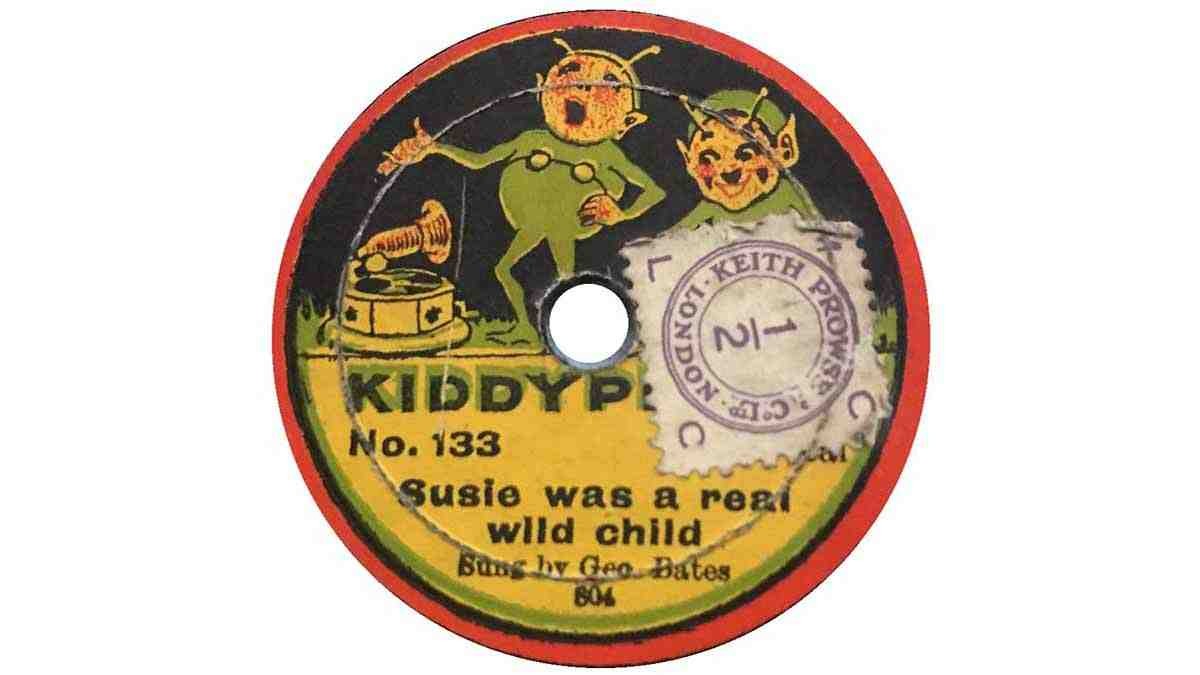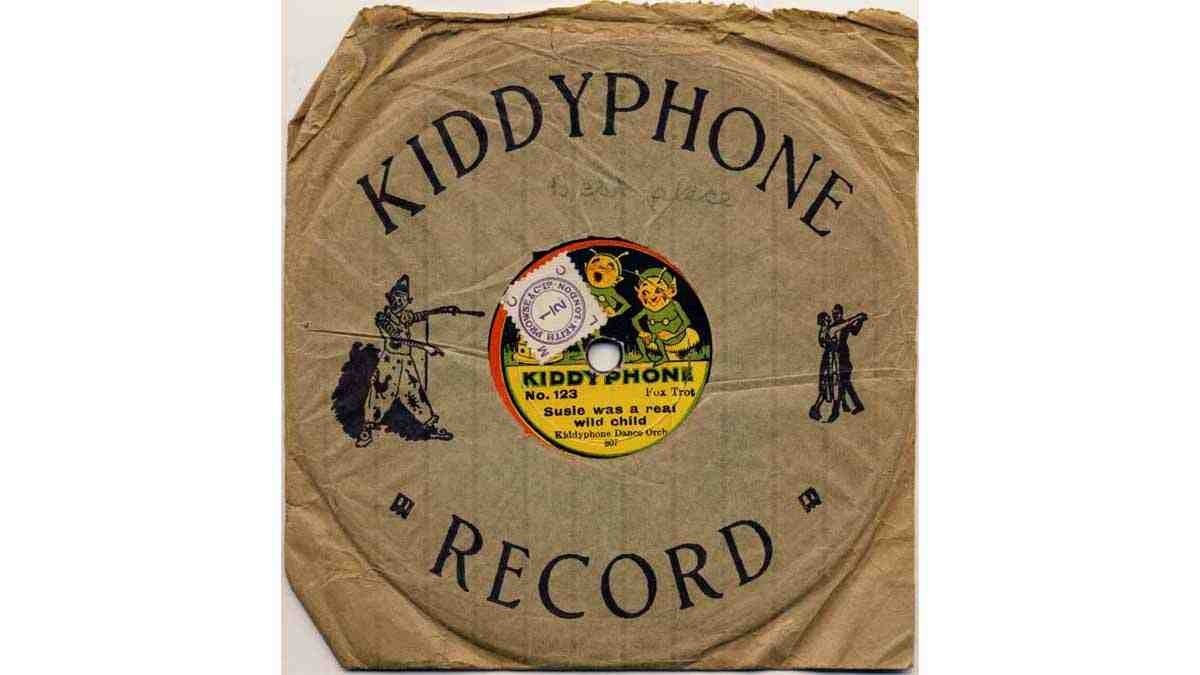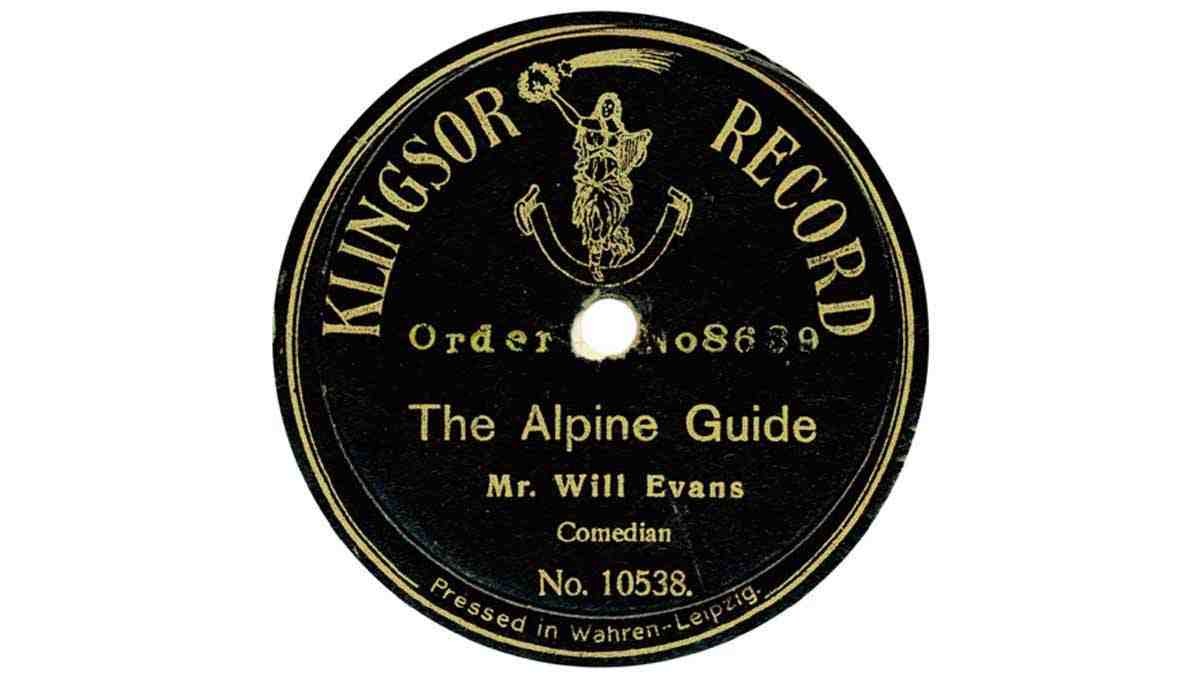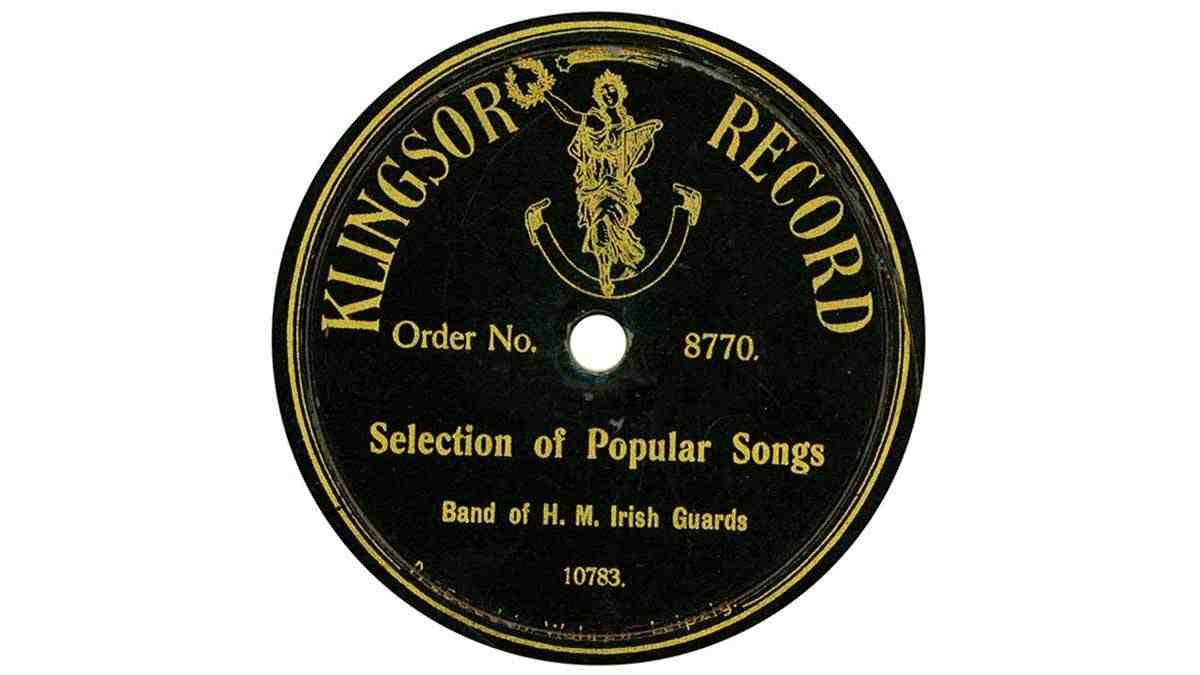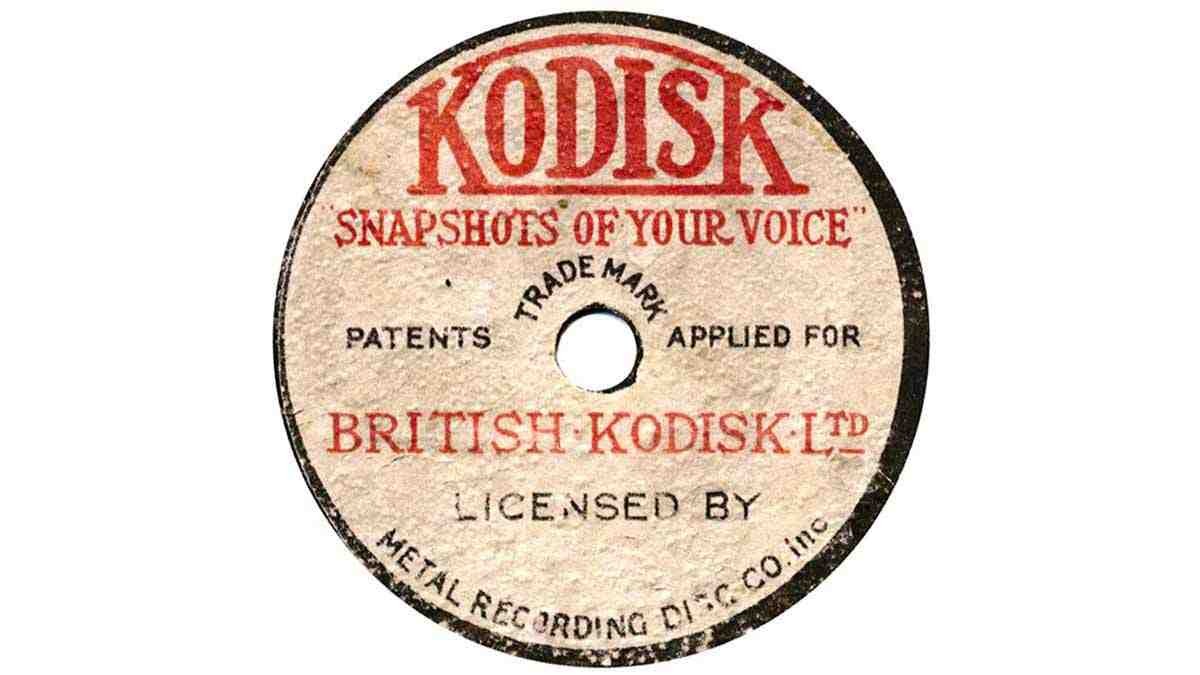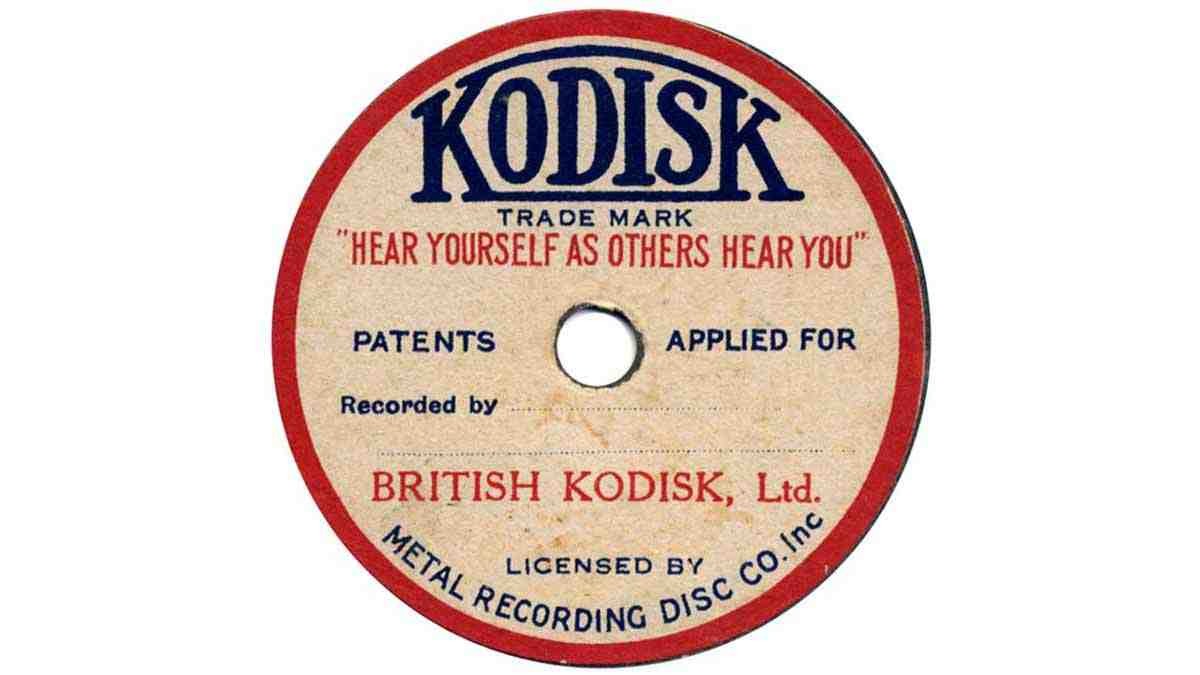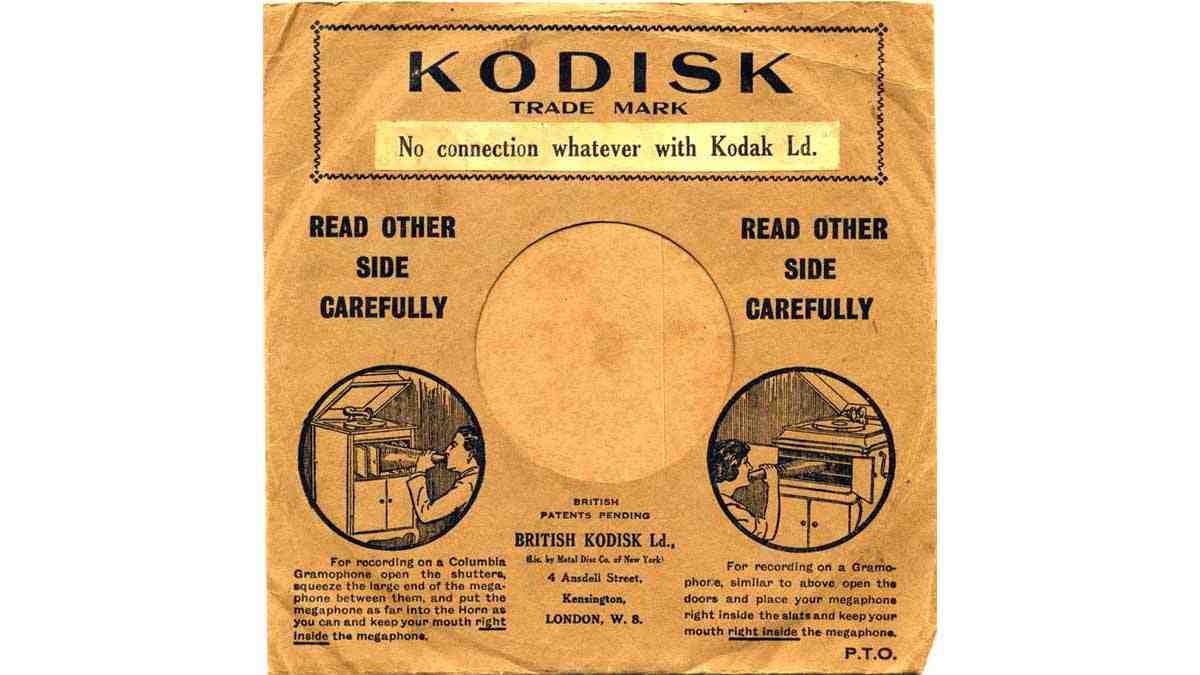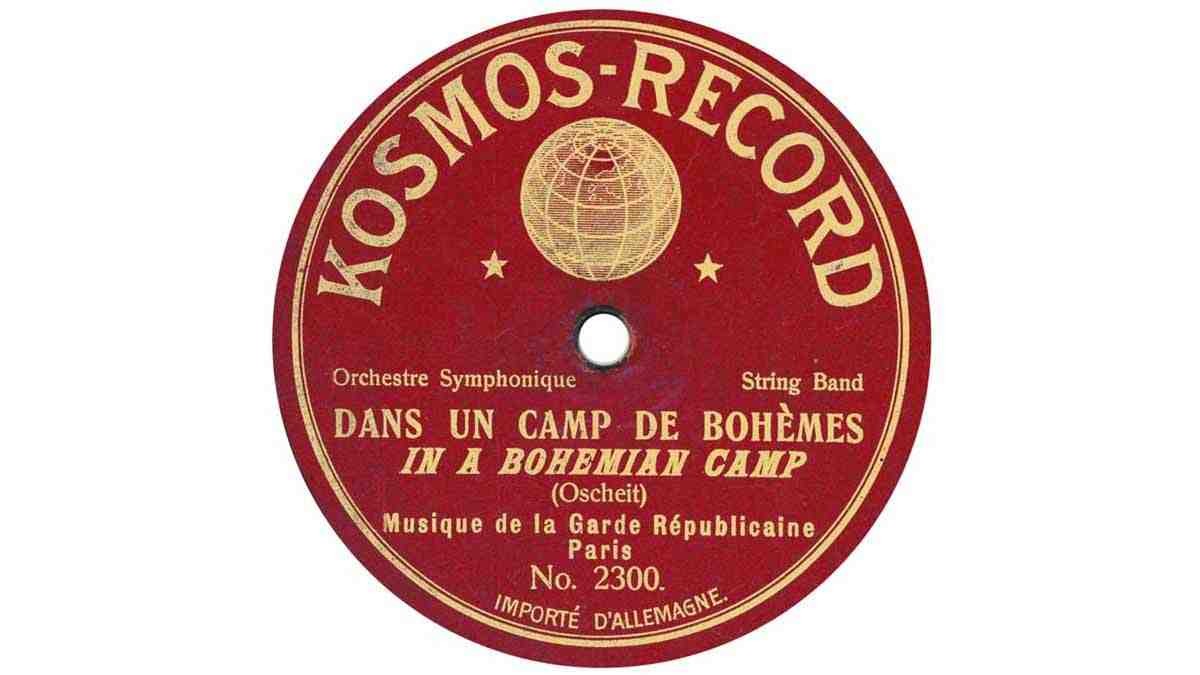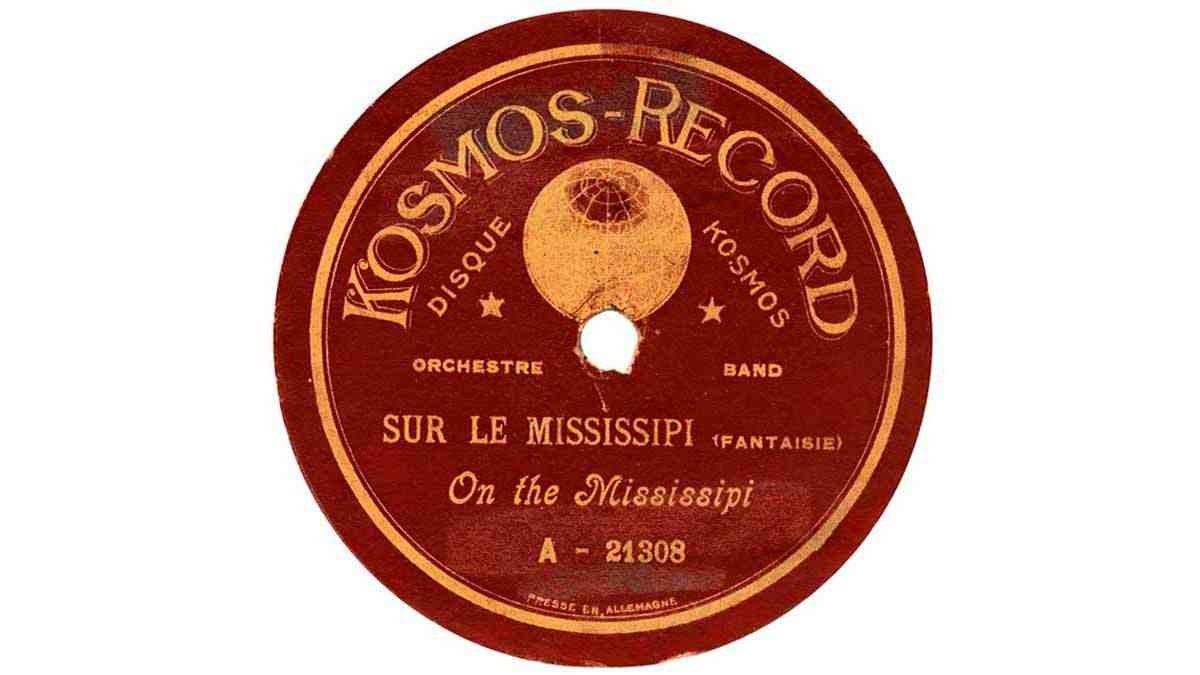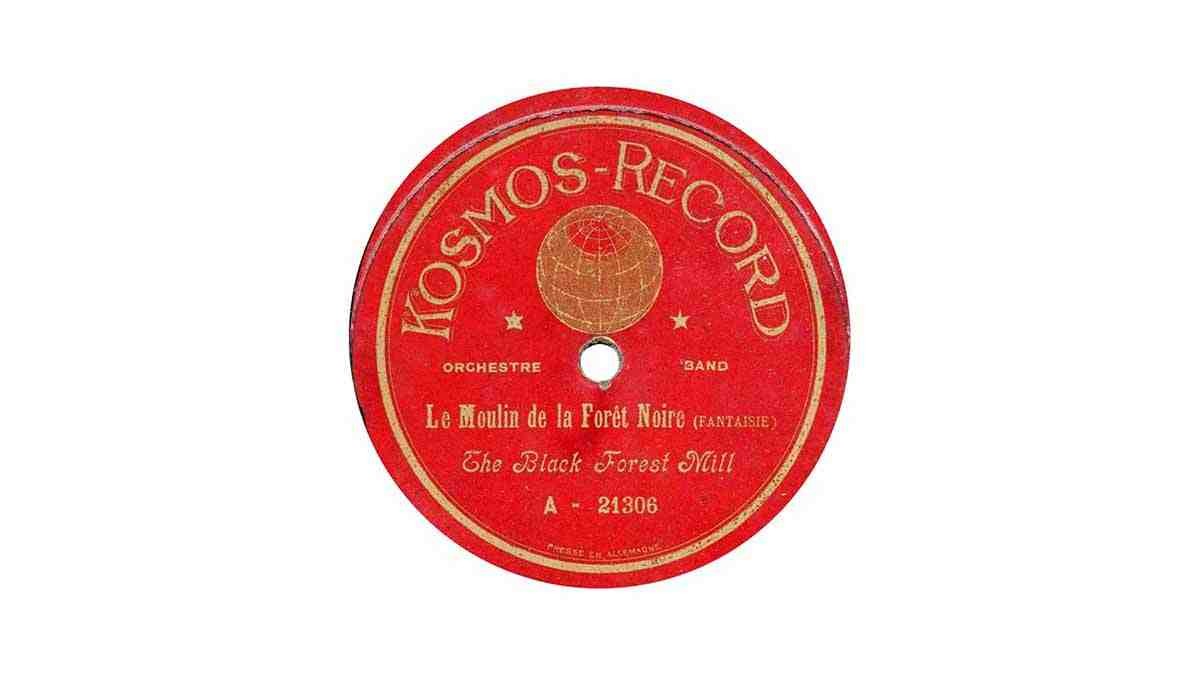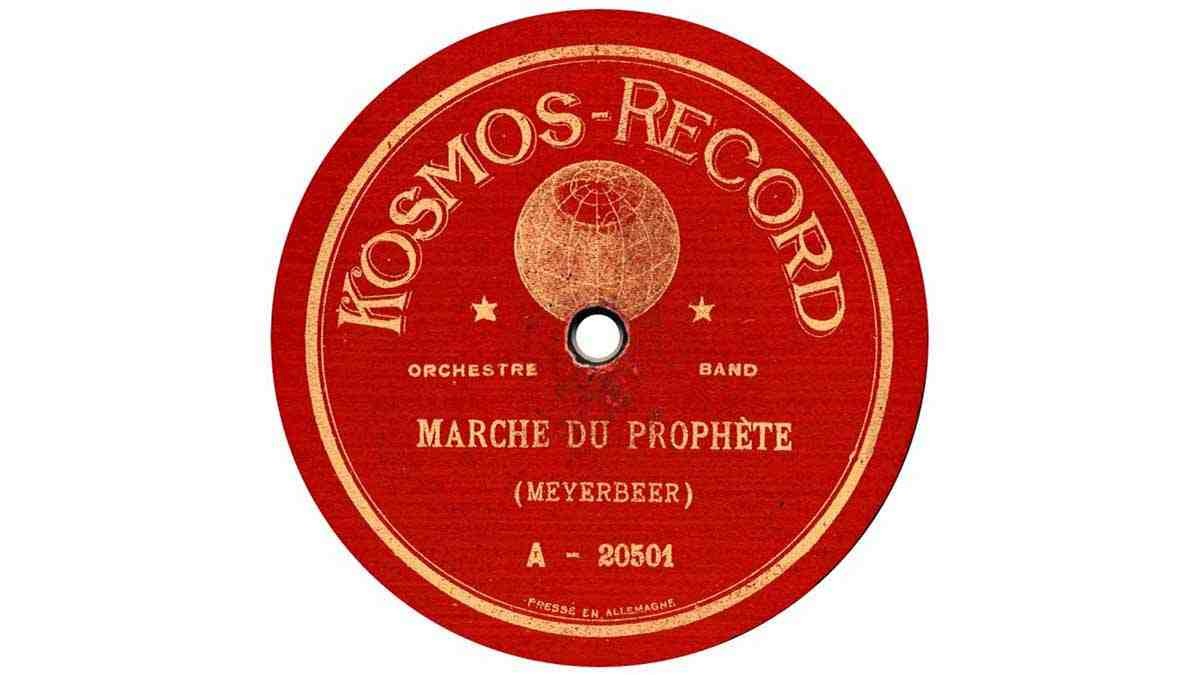
Early British record labels 1898-1926: K
Kalliope
See Frank Andrews: FTR 11, 2004, pp136-8. The Kalliope-Musikwerke A.G. of Leipzig had made musical boxes &c. for many years. Like other such companies threatened by the new gramophone, they ‘went with the flow’ and themselves began to manufacture gramophones, as early as 1904. Records soon followed (at first a short-lived agency for Odeon), but eventually Kalliope discs by 1908. However, these were not exported to the U.K. It was in 1912, following a complex dispute concerning a possible merger with the London firm Blum & Co., that the first Kalliope-made discs appeared here, under the name ‘Our Flag’. Following the settlement of the dispute with Blum, Kalliope records bearing London-recorded material finally appeared in November 1913, though Blum did not handle them. As all German imports ceased in August 1914, there was not much time for them to flourish. Still, following an initial release of 250 items, the catalogue had built to 300 discs by January 1914, and they do turn up from time to time, and are well recorded & pressed & the labels are reassuringly uniform, as you can see. One interesting point is the ‘Band of H.M. 12th Hussars’ – this is a very good band, but some of them are German recordings and indeed, the band name itself is German. ‘H.M.’ is actually Kaiser Wilhelm II, and the 12th Hussars are ‘The Thuringian’. Our 12th Regiment of Horse was the 12th Lancers! Thanks to Nick Ward for sorting that one out.
Kalophone, Grand and Master
This is a scarce Australian label. It was made in the U.K. by Lindström-Beka for Beale & Co., of Sydney, and would have been pressed at the Lindström works at Hertford. Kalophone 387 is the same as Beka 387. The Beka was issued in February 1911. And Kalophone 814 is a ‘clone’ of Beka 814 – there were only 5 parts to P Lacome’s ‘Mascarade Suite’; the reverse is ‘Berceuse’ by the same composer. That Beka was issued in March 1914. The German-based Lindström group was suppressed in this country in 1916, so an estimate of say 1913 to 1916 would be reasonable for this label, with its nice Lyre Bird trade mark. Note that the earlier disc is rubber-stamped ‘Made in England’ in gold ink; the later one states this on the label, along with the fact that ‘Kalophone’ is a trade mark registered in Australia. Recently, Chris Singer kindly sent, from Australia, a 12″ (30 cm) disc, called ‘Kalophone Master’ record. This co-ordinates perfectly with its Beka origin, for their 12″ discs in the U.K. were called ‘Beka-Meister’; though, clearly, the Australian market insisted on an English equivalent! This disc was recorded in Berlin, issued in the U.K. in July 1911, and sometime a little later, on Kalophone-Master in Australia.
Kiddyphone
See Frank Andrews, FTR 11, 2004, pp 140-1. The Kiddyphone trade mark was registered in the U.K. to the German toy & novelty company Bing-Werke in April 1926. They had already been marketing toy tinplate gramophones and suitable small records in other countries, so Kiddyphone was their British line. The discs were pressed by Crystalate, either from Mimosa masters already to hand, plus others, as they were newly recorded. Three sizes are were used: 5.5″, 6″ and 7″ (14cm, 15.25cam & 18cm). In common with most labels of this type, contemporary material was coupled with non-copyright stuff to save on royalty payments. In the above example, ‘Susie Was A Real Wild Child’ was a current popular song and so bears the (minimum) copyright payment of one halfpenny. The ‘Felix March’ is non-copyright. Had both sides paid a royalty, that would have been one penny, and since the discs were sold in 1925 for fifteen old pence (1/3d. or ~6.5p), that would represent a payment of 7.5%. Yet the required royalty was only 5% of the retail price. Very few companies were prepared to over-pay the publishers, hence the use of non-copyright material for one side.
Kiddie Record
See Frank Andrews, FTR11, 2004, p140. The wholesalers Murdoch distributed Kiddie Records from April 1923, and another firm was offering them in 1925. They were 6″ (15.24cm) in diameter and single sided as regards sound, though the reverse of the disc carried a large coloured illustration from the story or rhyme on the playing side. A reverse is illustrated in FTR 11. Five discs were available, and could be had in an illustrated album for 5/- (25p). They first appeared in the U.S.A. in 1922, and were made by a company under the aegis of Victor Emerson, already a veteran of the recording industry. Eventually, several albums were available here, though they are not common. The connection with British Kodisk Ltd. is simple: Kodisk was another Victor Emerson venture in the U.S. (see below), so it was obvious they should be handled in the U.K. by an Emerson affiliate.
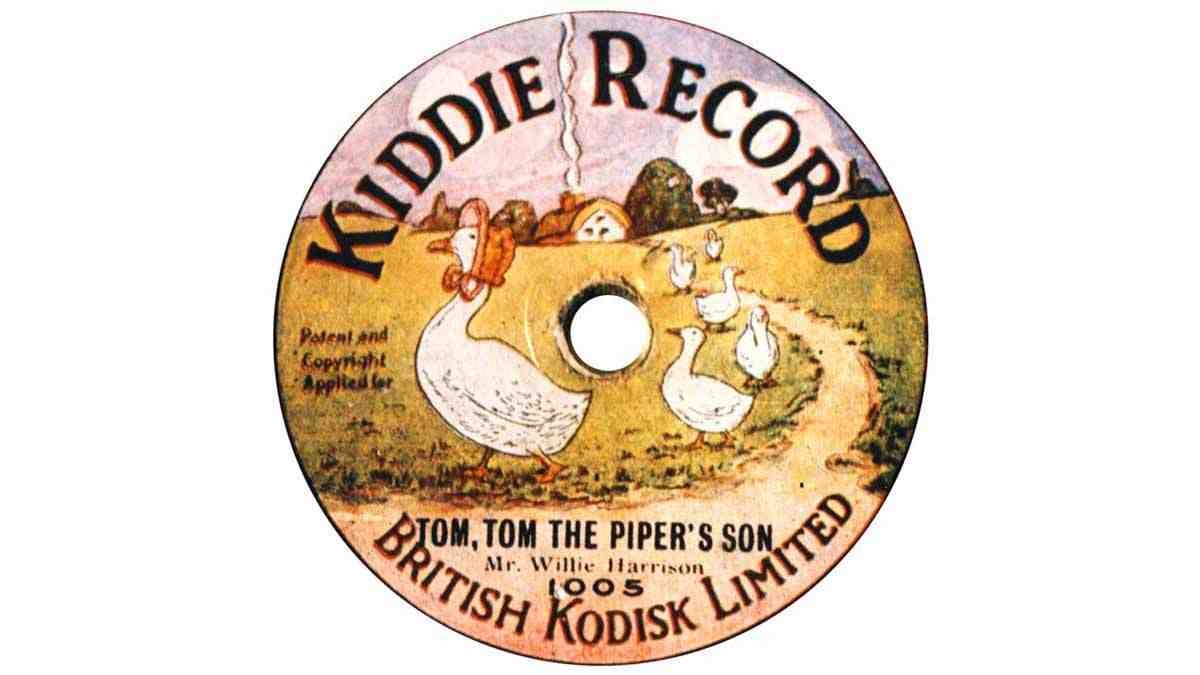
Klingsor
See Frank Andrews: FTR 12, 2004/5, pp 203-4. The Klingsor company was noted for its gramophones which had an ‘Aeolian Harp’ of strings stretched across the mouth of the horn. The strings were supposed to be set into vibration by the music, thus enhancing it. The horn was usually concealed in an upright cabinet. Their machines (eventually manufactured in this country) are scarce and very much sought after. Their records were made by Polyphon, and so show the odd feature of that make: the end of the run-off groove goes underneath the label. They bear the Polyphon trade mark. Klingsor records appeared here in 1910, but in late 1911, Polyphon opened its own branch in London, and Klingsor was, in effect, absorbed back into Polyphon. These discs are elusive, but turn up very occasionally. (See also Agincourt.)
Kodak
See Frank Andrews, FTR12, 2004-5, p204-5. In late 1923 or early 1924, there appeared the Kodak record label. It was produced for them by the Aeolian Co. (= Vocalion). Only a handful of examples are known to us, for it was not intended for sale in this country, but in Australia & New Zealand. There seem to have been over 100 issues, beginning at Z-500. These probably appeared all at once, offering an ‘instant catalogue’ of all popular music styles: comic songs, dance bands, instrumental solos, military bands playing marches & overtures, plus pop songs & parlour ballads. We are grateful to Adam Miller of New Zealand for sending this image – he told us that he acquired the disc from a collector/researcher who had it hung on the wall as a scarce label for many years, resulting in its slightly faded appearance. Slightly distressed it may be, but in view of its rarity, it is just as welcome as if it were pristine!
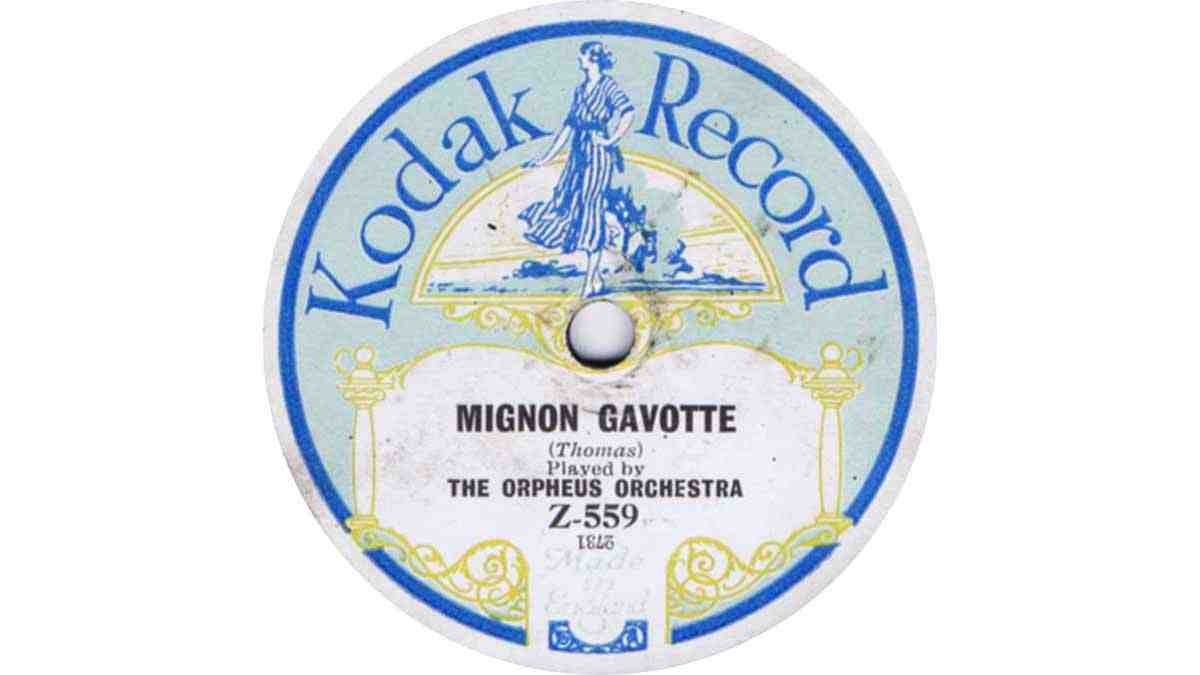
Kodisk
See Frank Andrews, FTR12, 2004-5, p205-6. In these pages, we have several times described the search for an unbreakable record as the ignis fatuus of the record industry from earliest times. But a close contender would be the production of a simple and cheap means by which the public could make their own sound recordings. Cylinder phonographs that had a feed-screw (most of the half-decent ones had them) had always allowed their owners the facility to do so. You only needed to change the reproducer for a recording version, slip a blank soft wax cylinder onto the mandrel, and off you went! With discs it was considerably more difficult to contrive a home recording device. (We now have a page devoted to these, click here.) But in the U.S.A. in 1921, the inventive mind of Victor Emerson – already a veteran of the record industry – thought of, and patented, a pre-grooved metal disc. This would guide the sound-box of your gramophone across the disc, while at the same time, you spoke or sang into the horn of the gramophone. With any luck, the gramophone would act in reverse, and emboss your vocal efforts on the hitherto smooth walls of the groove. It may have worked quite well at the time. But alas, it would seem that in the intervening 90 years, those transient modulations have disappeared, as it were, resorbed into the groove. Adding together all the known instances of present-day owners of Kodisks, I can state categorically that of over thirty known examples, not a single one is claimed to replay anything comprehensible. Quite apart from this, the ire of the Kodak film & camera company was kindled, not only by the name Kodisk, but also by the phrase ‘Snapshots of your voice’. Kodak cameras took the ‘snapshots’, OK? The slogan had to be changed to the rather biblical ‘Hear yourself as others hear you’, and stickers placed on packets (and indeed some discs) declaring that Kodisk was nothing to do with Kodak. A dedicated ‘megaphone’ was available as an accessory; there was also a sound-box, at least in the U.S.A.
Kosmos
See Frank Andrews: FTR 12, 2004/5, pp206-8. An exceptionally scarce label, Frank tells us that they were launched at the 1908 Franco-British Exhibition in London. Kosmos was a French company based at Roubaix, in the extreme north of France. Double sided, bilingual and lateral cut (vertical cut remained popular in France for many years still to come), they cannot have made much impact. Kosmophone gramophones were also on offer. A Listing contained 20 discs, all simply credited to ‘Orchestre’ / ‘Band’, so Kosmos 2300 which credits La Garde Républicaine is probably later. At the foot of the label is ‘Importé d’Allemagne’ or ‘Pressé en Allemagne’. Dr. Rainer Lotz. kindly informed us that many of the masters on Kosmos were derived from the German Anker label.

